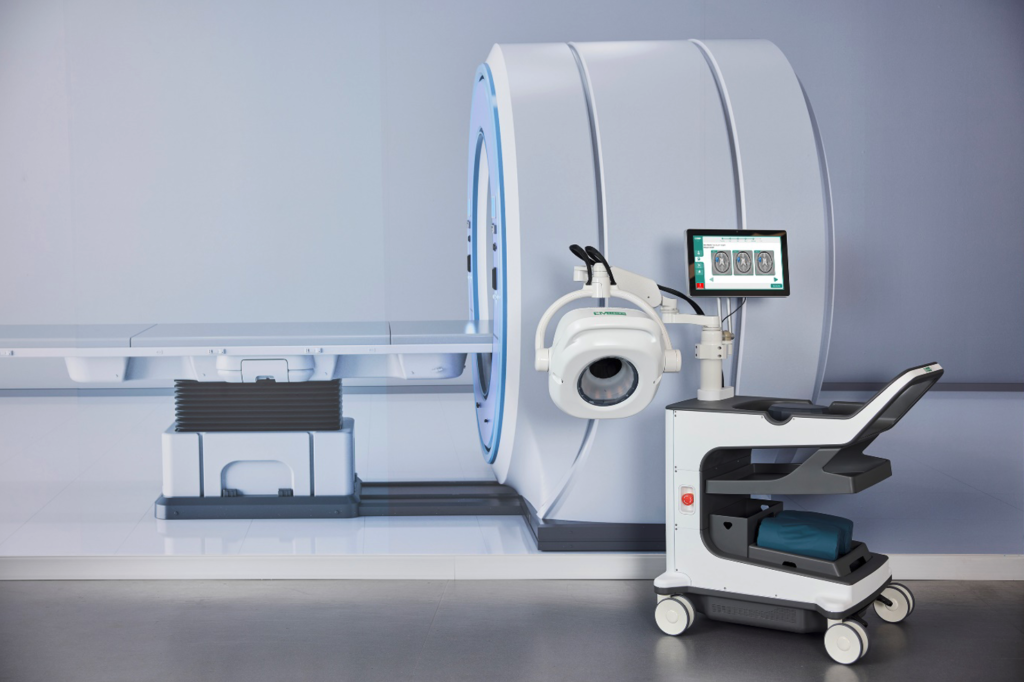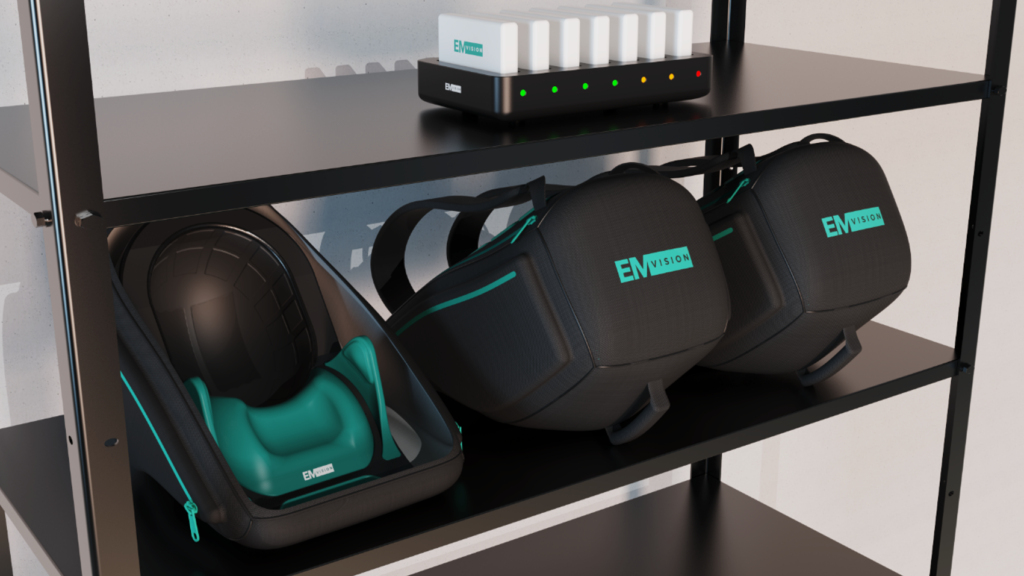Meet one of our two commercial partners: EMVision
The Australian Stroke Alliance’s funding through the Medical Research Future Fund calls for a unique collaboration between researcher clinicians and local biomed entrepreneurs to fast-track ingenuity. In this case, QLD-based EMVision tells us about their quest to invent a lightweight brain imaging device small and robust enough to travel in road and air ambulances.

A standard CT scanner in the background is enormous when compared to the portable helmet-like device in development
‘Ischemia or haemorrhage?’ is often the first question asked when a patient with suspected stroke is placed in a scanner. It is critical to determining the type of urgent therapy or intervention the patient will benefit from. Any delay in answering this question reduces the chance of a good outcome for the patient, with that risk increasing the further they are away from hospital scanning facilities. The “workhorse” in stroke imaging that helps answer these questions today is CT. It has transformed the landscape of stroke care, benefitting millions of patients. Yet, because of its size, cost and complexity, researchers and engineers have continued to look for new ways to see into the human brain.
The team at Australian medical device maker and Australian Stroke Alliance technology and commercial partner, EMVision, have demonstrated the potential for an alternative way to image the human brain using a lightweight portable brain imaging device to be operated by paramedics in the field, with images sent via telehealth to neurologists to guide timely decision making. It utilises low energy non-ionising electromagnetic waves on the microwave spectrum. These waves are similar to what our mobile phones use to transmit data. The technology is currently undergoing hospital trials with suspected stroke patients with recruitment expected to begin in May. The first-generation cart version of the technology which is currently being tested, can be operated by healthcare professionals with the right training, and has potential applications in stroke wards, ICUs and remote communities. Next year, a lightweight helmet version of the technology is scheduled for road and air ambulance trials. The goal? To provide images that allow treatment decisions to be made. Significant validation work is now required.
Due to the portability of the proposed helmet scanner, the technology could be used in a variety of scenarios where CT or MR imaging may not be accessible or practical. It promises to greatly expand access to timely brain imaging for patients with a suspected stroke. It is critical to expedite effective clinical treatment in stroke and may help to bring greater equality of care to our most remote communities.
We’re looking forward to advancing our product development and validating the clinical use of our game changing scanners with our colleagues across the Australian Stroke Alliance. We are grateful to have some of the leading minds in stroke care guiding our journey to ensure we are making products that are going to be easy to use, useful and most importantly generate positive outcomes for stroke patients.
EMVision has developed novel brain scanner hardware and algorithms capable of classifying and localising a stroke, as well as creating an anatomical reconstruction of the patient’s brain. It aims to undertake clinical validation trials of its technology in stroke this year, with plans to expand to traumatic brain injury and other time sensitive medical emergencies.
The benefits could be enormous says Ron: “EM is much smaller than CT or MRI machines, costs far less to deploy and operate and we believe will be a powerful solution to deliver urgent brain imaging anywhere in our vast country”.

EMVision’s model of the helmet scanner also in development